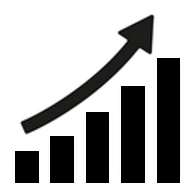If you are a CEO, a VP of Sales or a VP of Marketing thinking about accelerating revenue growth, you need to invest in clearly defining your Go-to-Market Strategy. One of the key aspects of scaling is making sure you understand it clearly.
A Go-to-Market Strategy (aka “GTM“) is at a basic level a plan of how you “go to market” – more specifically it is all the necessary sales & marketing activities and all the key stakeholders combined to connect your product/service/solution to your market (your prospects and customers). Whether you are launching a new product or entering a new market or vertical, you need a Go-to-Market Strategy to connect your solution to your market successfully. Needless to say, GTM can vary significantly for any given industry, market segment and company.
Any misalignment of your product, marketing or selling to your market segment will be a huge hurdle to scaling and accelerating your sales. If you are targeting the wrong market segment or solving a problem but selling the solution to a wrong customer then such pitfalls can derail sales, lose a lot of money, miss many consecutive quarters of selling targets and in some cases can even derail the whole company unless you have a lot of capital and thus room for error. This is why it’s crucial to invest the time and ensure your Go-to-Market is done right.
Here are now the 3 steps of defining your Go-to-Market Strategy in SaaS:
1. Segment your market
And as part of assessing or clearly planning out your Go-to-Market Strategy, you must segment your market effectively and you need to clearly identify what I call your MAP – I came up with MAP to define the 3 key areas that you must have in alignment to your product and your sales and marketing:
- M: Market – Market & Segment
- A: Account – Company Profile
- P: Persona – Target Buyer Profile (profile of your target buyer)
You need to look at your market and the business environment to understand how to market and sell your solution both efficiently and effectively into each segment that your company is targeting.
Here is how I would apply the MAP:
- Market
- Industry
- Geography (less common in SaaS but used when there are specific vertical solutions or focused on large accounts)
- Accounts
- Company profile, business focus
- Company size – revenue, number of employees, etc.
- Other attributes relevant to your segmentation
- Persona
- Title
- Role
- Customer Buying Behavior (which defines what we call the Buyer Journey in Sales Process)
- Buying Process
- Benefits of the solution to this particular buyer profile
- Seller engagement preference (do they require inside sales or field sales, do they need consultative selling or simple transaction sale)
2. Define the key Customer Acquisition activities for each segment
Key customer acquisition activities are all the things you must do to meet the needs and solve the challenges/problems/pain points of your target prospective customers.
You must then develop these key Customer Acquisition plan components for each segment
- Create awareness & interest (Demand Creation)
- Lead Generation
- Selling – winning/closing deals
These must be in alignment with your MAP.
3. Identify the key team members affecting your Customer Acquisition
This is the “Who” – who will be involved in driving customer acquisition. Most of the SaaS selling today is hybrid and done through both Marketing and Sales.
For example, Lead Generation is done very efficiently through Inbound Marketing. But your Outbound SDR team (the Sales Development that does Outbound Prospecting) can target leads very effectively by segmenting target or named account lists and performing outbound prospecting efforts into those lists. They can then generate sales qualified leads (SQLs) that are scheduled as introductory first meetings for the Account Execs.
Once you know your Go-to-Market Strategy, understand the different MAP segments and have clarity around your segments and how to align your Customer Acquisition to them then you have a much more clear plan to begin scaling and accelerating your SaaS growth.
What else? What are some other thoughts on how a clear Go-to-Market can help accelerate your SaaS Sales?
